NOTE: For prior parts in the Hizballah Cavalcade series you can view an archive of it all here.
—
Saraya al-Mukhtar: A Bahraini Militant Group with Regional Goals

Figure 1: Saraya al-Mukhtar’s newest logo. The group’s name is on the bottom, a black zulfiqar style sword combines in with a a black roundel featuring a green fist and black barrel and forearm of a Kalashnikov-type rifle. On the left is a red map of Bahrain.

Figure 2: Saraya al-Mukhtar’s first logo. The symbol appears to show two crossed bifurcated Zufiqar-type swords resting on a book (most likely the Quran). The organization’s name appears at the bottom of the logo.
First announcing itself to larger audiences online in a September 26, 2013 statement on Facebook (albeit, the statement itself was dated September 27), Saraya al-Mukhtar (The Mukhtar Brigade or SaM) has claimed numerous attacks on Bahraini security forces and has developed a sophisticated messaging strategy. At the time, the then new group promised to strike at the ruling Khalifa royal family and their security forces with, “operations of quality”. Despite the group’s September online appearance, it still claimed attacks since the summer of 2013. These operations have primarily included the use of crudely produced improvised explosive devices (IEDs) and types of arson attacks. SaM also has the unique distinction among Bahraini militant groups for claiming their first fallen member, or “martyr”, Ali al-Sayyid Ahmed al-Musawi. The group’s narrative on both a regional and potential religious-ideological level have also set it aside from other Bahraini armed organizations.

Figure 3: Saraya al-Mukhtar’s martyrdom poster for Ali Sayyid Ahmed al-Musawi.
Save for the occasional mentions state-run Bahraini press organs and opposition reports on the situation in Bahrain, for the most part, the group has not received as much media scrutiny as militant groups such as Saraya al-Ashtar. Additionally, SaM appears to have escaped specific mention on Bahrain’s terror group list.[1]
The group calls their foes; The Khalifa royal family, Bahraini security forces, and Saudi Arabia, “a mafia/the Khalifa mafia”, “mercenaries/criminals”, and “occupiers”, respectively. In a November 3, 2013 announcement, SaM vowed to “crush the fascistic regime.” This type of discourse generally fits with most rhetoric issued by Bahraini militant groups. Though, SaM appears to be a bit more colorful when describing their enemies.

Figure 4: SaM’s November 3, 2013 statement.
In terms of promoting the group’s goals, narrative, and attacks, Saraya al-Mukhtar has exhibited the most advanced strategy and online presence when compared to other Bahraini militant organizations. The group has Facebook, Twitter, and Instagram accounts, among other modes of digital communication with supporters. On March 5, 2014, the group’s main Facebook was taken offline. Another page was quickly made in its place where the group claimed “the tyrant’s mercenaries” took the last page down. On YouTube, the group (or possibly loosely-linked supporters) started separate accounts which would upload one clip of an attack the group claimed and then become inactive. It is unclear whether this is done as an operational security method or for some other purpose. As with Saraya al-Ashtar, the group has also sent footage of its attacks to popular pro-revolution YouTube stations for broader dissemination.
Shia religiously-based rhetoric is a more established common feature in SaM’s releases, rhetoric and even the group’s name. The organization also calls itself, “Al-Muqawama al-Islamiyya al-Bahrania” or the “Bahraini Islamic Resistance.” Most Iranian-backed militant organizations also use this term as a self-descriptor.[2] However, it is possible this could be an example of mimicry, demonstrating the group respects the strength of those organizations and is attempting to adopt their rhetoric to appear more powerful.
Saraya al-Mukhtar’s moniker is likely a reference to Mukhtar al-Thaqafi. Mukhtar al-Thaqafi was a figure who launched a failed rebellion against the Umayyad’s in the 7th century. The rebellion was initiated in southern Iraq and executed in order to get revenge for the death of the third Shia imam, Husayn ibn Ali, who was killed by the Umayyads during the Battle of Karbala.[3]
Interestingly, the name of the group and its background history plays into the style of media campaigns and announcements made by SaM. Often, the group brands their attacks and those launched by other groups against internal security elements as “revenge.” On January 27, 2014 SaM launched the “Vengeance Has Been Achieved Media Campaign.” Until the time of this writing, the slogan, “Vengeance has been achieved” is still stamped onto the photos of injured (often in hospital) Bahraini police.
The recruitment and naturalization of foreigners (particularly from Sunni Muslim religious backgrounds) into Bahrain’s internal security forces has been a main objection for peaceful protesters and militants alike. This is a main reason why SaM, other Bahraini militants, and peaceful protesters have referred to these internal security elements as “mercenaries.” Tapping into this grievance, SaM regularly posts images of police officers with foreign backgrounds that the group has targeted.
Additionally, the motive of “revenge” may be another attempt to appeal to some younger portions of the protest movement. Due to numerous bloody crackdowns by the government, these elements have become fed-up with more traditional groups leading peaceful protests.[4] Thus, SaM likely sees them as a component which can be brought into to give some level of support (even passive) to the organization’s activities.

Figure 5: On February 9, 2014, SaM claimed to kill Ahmed Rashid al-Moraysi, a Syrian working for the Bahraini police. “Vengence has been achieved” was stamped on the photo.
Claimed Militant Activities
Saraya al-Mukhtar has been quite prolific in the production of videos and the release of photographs to show off its attacks. In one November, 2013 attack on what the group claimed was a communications network station, photos and a video of the target being attacked (with what appears to be a crude incendiary device) were posted online.

Following Saraya al-Ashtar’s claimed March 3 bomb attack against Bahraini police, Saraya al-Mukhtar praised the, “Bahraini Resistance.” On March 5 SaM released an edited photo showing the aftermath of the bombing and praising the action.

Figure 6: Saraya al-Mukhtar’s image praising the bomb attack on March 3, 2014.
The group also claims to be in possession of a special sniper weapon they call the “Mukhtar 1”. It is unclear if the weapon is a firearm or some other improvised device. However, SaM has released video on March 4, 2014 of the Mukhtar 1 in use against Bahraini police forces. Like Saraya al-Ashtar, SaM’s videos were released through a combination of the group’s own YouTube pages.
Another uploaded Saraya al-Mukhtar video claimed to show a January IED attack against a Bahraini police checkpoint. This video was also sent into other YouTube stations in a possible effort to increase viewership.

Figure 7: A Saraya al-Mukhtar released photo claiming a January attack against “mercenaries”.
Regional Outlook & Ideology

Figure 8: Saraya al-Mukhtar’s February 20, 2014 post.
Saraya al-Mukhtar’s potential links with radical Shia Islamist ideology and the group’s regional aspirations were showcased in a small post made on their official Facebook page on February 20, 2014. The group appears to view the conflict in Bahrain as part of a larger regional conflagration involving Saudi Arabia. Their post read, “The cause of the people in the Eastern Region [of Saudi Arabia] and our defense is one…Resistance against Saudi occupation, our taklif, and our fate are united.”
The statement about Saudi Arabia’s “Eastern Region” is a direct reference to an area which not only borders Bahrain, but is main zone where much of the Saudi Shia Islamic community, 15 percent of the Saudi population, call home.[5] Saudi Shia have faced exclusion from politics, government positions, and many economic opportunities, not to mention suffering religious discrimination. Throughout 2013, Saudi Shia groups organized numerous protests—particularly in Qatif,
Category: Iran
Hizballah Cavalcade: Saraya al-Ashtar: Bahrain’s Illusive Bomb Throwers
NOTE: For prior parts in the Hizballah Cavalcade series you can view an archive of it all here. For the first part in the subseries on Bahraini militant groups: “The Pearl and the Molotov.”
—
Saraya al-Ashtar: Bahrain’s Illusive Bomb Throwers
by Phillip Smyth

Figure 1: Saraya al-Ashtar’s main logo. The symbol shows two Kalashnikov-type rifles crossed over a roundel which resembles a pearl. The base includes the group’s name.
“The operation comes in revenge for our martyrs”, read the March 3, 2014 “Statement No. 9”, issued by Saraya al-Ashtar (The Ashtar Brigades or SaA) on Facebook and Twitter. This declaration directly referred to a bomb which was detonated during a Bahraini police operation in the town of Daih. Three were killed, including an Emirati officer who was deployed to Bahrain as part of the “Gulf Waves Force”.[1] Reportedly, the police were attempting to disperse what was claimed in an official statement as a “riot.” The protests occurred following funeral demos for another Bahraini protester.[2] However, the group claiming responsibly for the bombing received little attention in Western media and passing mention in Arabic language news. Regardless, the Saraya al-Ashtar group is quickly making a name for itself via it bombing campaign.
Since the summer of 2013, the group claimed almost twenty attacks against security personnel in Bahrain. The March 3 blast appears to be another attack in a long and developing list of bombings carried out by the group. This will probably not be the group’s last. On March 4, the Bahraini government listed Saraya al-Ashtar as a terrorist group.[3] Still, the organization is quite shadowy and despite Bahraini government arrests, appears to be active.

Figure 2: Saraya al-Ashtar’s Statement 9, which claimed responsibility for the bombing of Bahraini police officers.

Figure 3: A member of the Bahraini internal security forces looks at blood-stained concrete following the March 3rd blast. (Source: Facebook)
Saraya al-Ashtar released its first statement via their Facebook page on April 27, 2013 (albeit, the written statement was dated April 28, 2013). In part, it stated, “Enough is enough” in regard to the actions of, “the rabid dogs of al-Khalifa [Bahrain’s ruling royal family].” The group promised to strike their enemies the next day. Keeping to their word, on April 29 SaA claimed in another post that they had, “Targeted a collection of mercenaries [the term most Bahraini militants use to describe Bahraini internal security forces] at the Adra roundabout”.[4]
Attacks such as these have demonstrated SaA’s preferred method of operation: Building and detonating improvised explosive devices and their direct targeting of Bahraini government security personnel.
SaA has an extensive social media presence with Facebook and Twitter accounts. These platforms are used to promote the group, broadcast threats, and to claim responsibility for attacks. Nevertheless, the group has not posted any photographs of their operations, membership, or weapons systems.
In fact, SaA has not released any photographs save for their logos. With the logos come further questions. SaA’s first displayed symbol was clearly modeled off of Iranian-backed groups, most likely Kata’ib Hizballah’s logo. Their second, showing crossed Kalashnikovs over what appears to be a pearl (a national symbol for Bahrain) continues the militant theme.

Figure 4: SaA’s first logo.

Figure 5: Kata’ib Hizballah’s logo. Note the similarities between the fist-clenching-Kalashnikov images.
While photographs have been lacking, there have been a number of videos released onto the internet showing SaA’s attacks. Since the summer of 2013 the group has also posted video footage of some of the attacks it has carried out against Bahraini security personnel. One of the videos claimed to show an attack the group made in Bani Jamra, a town in northwestern Bahrain.[5] In another video from October, the group wrote, “This is just the beginning.”
Designed to coincide with the major February 14 protests (which commemorate the start of the 2011 Bahraini Uprising), SaA carried out another nighttime attack against Bahraini internal security forces and also released a film of their action. Albeit, instead of using their own accounts, this time the group sent the video to the popular “Revolution Bahrain” YouTube station. This style of release was repeated following the March 3 bombing when the group released footage it claims to have taken showing the aftermath of the bomb. In all cases, films of their attacks are regularly edited in order to give the group a level of operational security.
Following the March 3 blast, supporters of the group published clips which reportedly showed protests in support of the “holy warriors of Saraya al-Ashtar.” During the protest, candy was handed out to show support for the attack.[6]
The Rhetoric of Saraya al-Ashtar
Demonstrating a direct link to the adoption of Shia-centric forms of messaging, Saraya al-Ashtar’s name was likely no coincidence. It’s possible the group draws the roots of its name from Malik al-Ashtar, one of Imam Ali Ibn Abi Talib’s most loyal aids and colleagues. Malik al-Ashtar was also known to be a brave warrior and took part in a number of major battles at the behest of Ali. Ali Ibn Abi Talib, was the Islamic Prophet Muhammad’s relative and viewed by Shia as the Prophet’s successor and the first Imam.
The organization also refers to its combatants as “Rijal Allah” or the “Men of God.” The utilization of the phrase sets the underpinning for a religiously focused message: These fighters are doing the work of God. This immediately casts their foes as agents of a notably less than holy origin. The term finds regular use as a descriptor for Lebanese Hizballah and Iraqi Shia Islamist fighters among the supporters and members from Iranian-backed proxy organizations currently fighting in Syria.
Nevertheless, it is still essential to acknowledge that despite the organization’s clear Shia-centric messaging, it has attempted to argue that it is not a sectarian entity. In Saraya al-Ashtar’s July “Statement No.4”, the group accused the government of “igniting sectarian strife between the communities.” SaA also claimed that, “all of [Saraya al-Ashtar’s] operations are directed at the pillars of the corrupt regime and its mercenaries.”
There are a few ways to measure such a statement. When compared to the bulk of Iranian-backed Shia Islamist group rhetoric, those organizations also claim to be non-sectarian while simultaneously promoting an undercurrent of heavy Shia-centric sectarian messaging. There is also the possibility the group is honestly conveying its “revolutionary” beliefs. Arguing that its enemy is not Sunni Muslims, just the government under the Khalifa royal family and their supporting elements, is given more weight considering the group has only directly targeted security personnel.
As with other Bahraini militant groups, Bahrain’s security personnel are regularly referred to as “mercenaries.” The charge that Bahraini security forces are “mercenaries” stems from Bahraini recruitment of outsiders, primarily Sunnis from Pakistan and other Arab states. Additionally, while the organization has not specifically called-out Saudi Arabia or other Gulf states which sent forces to Bahrain in 2011, it does make passing references to their presence as, “the occupation.” In an effort to demonstrate the weakness of the Khalifa royal family, the SaA regularly refers to the Bahraini royals as a “collapsing regime”.
Saraya al-Ashtar’s Messaging & Links to Iran

Figure 6: Saraya al-Ashtar’s Statement No. 4.
At the time this post was written the group had released nine statements dealing primarily with their militant activity. Besides claiming responsibility for bomb attacks, another main focal point for SaA’s releases have dealt with the fate of political prisoners and to show support for main figures involved with the protests The condition of Abdulwahab Husayn Ali Ahmed Isma’il (A.K.A. Abdulwahab Husayn), a major ideologue, politician, and protest leader since the uprisings in Bahrain in the 1990s, was a core concern in SaA’s 2nd (May 17, 2013) and 8th (November 10, 2013) released statements. At the start of the 2011 Bahrain protests, Husayn was arrested by Bahraini authorities,
Hizballah Cavalcade: The Pearl & the Molotov: Bahrain’s Growing Militant Groups
NOTE: For prior parts in the Hizballah Cavalcade series you can view an archive of it all here.
—
The Pearl & the Molotov: Bahrain’s Growing Militant Groups
By Phillip Smyth
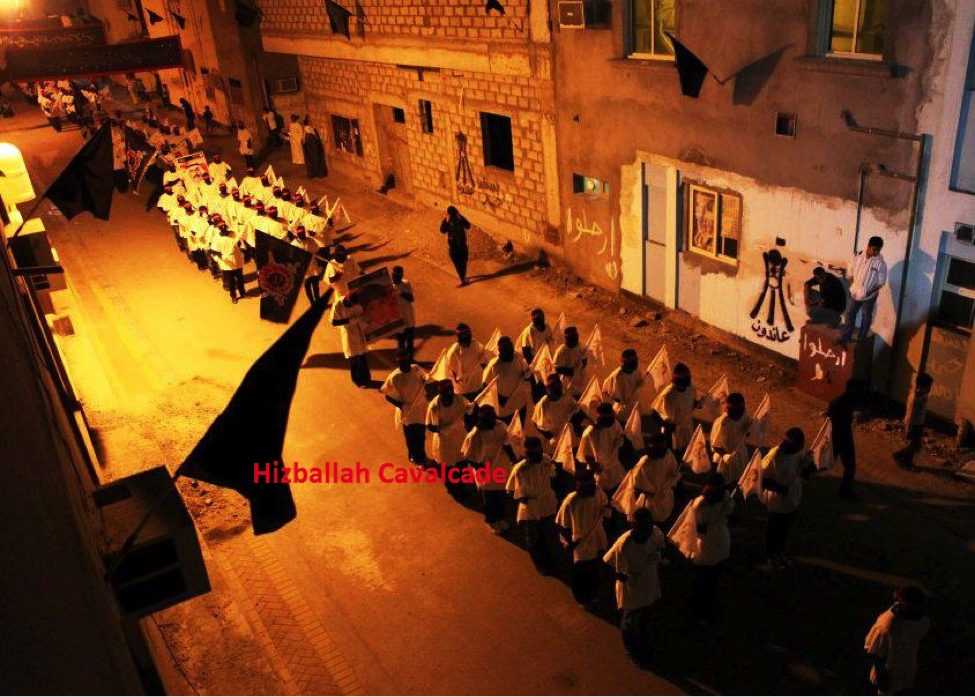
Figure 1: In a nighttime demonstration, members of Sariyya al-Muqawama al-Sha’bia (The Brigades of Popular Resistance) march wearing balaclavas and white burial shrouds. The shrouds exhibit their willingness to be martyred.
While a Shia jihad is being fought in Syria, Bahrain stands as another central conflict which continues to influence discourse, regional policies, and exacerbate sectarian tensions. For many Shia Islamists, particularly militant groups backed by Iran, Bahrain is a major political sore spot and focal point. Over the course of three years, the development of new militant groups within Bahrain has demonstrated that there is an increasing utilization of violent tactics. Since these militant groups are in the more rudimentary stages of development, there is the further possibility that they are increasingly viewing the conflict in Bahrain along regional and sectarian lines.
Main Goals of Hizballah Cavalcade’s Bahrain Posts
Since violent Bahraini organizations have not received adequate profiling, it is the goal of Hizballah Cavalcade to clarify their positions using primary open source material. Thus main goals include, but are not limited to:
- Describing the established organizations, their claims, goals, and ideological orientations.
- Analyzing claims made by the groups.
- Attempting to establish whether the organizations in question may have a connection to external actors.
A Little Background
Since 2011, Shia-majority Bahrain, which is led by the Sunni Khalifa royal family, has been gripped by protests calling for (among other demands) the Khalifas to abdicate, democratic reforms, and greater access for Shia to government positions.[1] For the most part, protests have been peaceful and have at times included both Sunni and Shia Muslims. These protesters have been faced with a number of often violent government crackdowns and accusations of the use torture by authorities.[2]
Yet, the protests, deaths, and growing polarization in Bahrain has regularly been considered a sort of sideshow when compared to other major protests and civil wars in the Middle East. The BBC even referred to the protests as the, “Forgotten Spring.”[3] Still, it would appear that some within the protest movement and possibly external organizations, are bent on forming groups to achieve their ends via violence.
On February 14, 2014—to commemorate the first “Day of Rage” held by Bahraini protesters on the same day in 2011—massive protests, which included main opposition parties and independent groups were held throughout the country. For the most part, these protests were peaceful. Around this time Bahraini authorities also reported a “terror blast.”[4] While this was hardly the first act of violence by a group within Bahrain, the blast underlined a number of more violent actions carried out by new organizations, since 2012.
In December of that year, Reese Erlich of the Global Post noted that younger elements of the protest movement were increasingly turning to violence and were making it difficult for local traditional leaders to control their activities.[5] By the end of 2013, new armed organizations calling for the overthrow of the Bahraini government were announced and continue to claim new attacks within Bahrain. In a period stretching from September 2013-January 2014, most of these new groups adopted higher profiles and attempted to brand their narratives, claimed attacks, and group identities within their online communities and pages.
Understanding Bahraini Militant Rhetoric
Bahraini militant organizations utilize rhetorical phrases and terms found with other Shia Islamist militant groups operating in Syria and Iraq. Often, their enemies are referred to as, “the Khalifa mafia”, “mercenaries” or “Saudi agents”. Nevertheless, this type of rhetoric also draws heavily upon local issues.
There were reports as early as 2011 that Bahrain was recruiting Sunni foreigners to man the internal security apparatus.[6] This issue of naturalizing foreign Sunnis, particularly from Pakistan, is viewed by protest leaders and militants alike as a major sectarian, economic, and social issue.[7] As future posts will show, the utilization of foreign-born police and security personnel is showcased in Bahraini militant propaganda.
Additionally, Saudi Arabia and other Persian Gulf Arab states sent forces as part of the Peninsula Shield which sent troops to Bahrain in March 2011. In April 2013, Peninsula Shield established a further headquarters in Bahrain in order to better coordinate their forces in the country.[8] Bahraini outlets have also reported that as of January 2014 these military forces were still defending “key instillations” and claimed they were not involved in Bahrain’s “internal issues.”[9] The presence of Saudi forces has added to the charge by protesters and militants that the Khalifas are simply propped-up by outside forces. An underlying message, which combines both national and religious identity, is that outside Sunnis (namely those who subscribe to Wahhabism; A religious movement which at times has demonstrated a violent hatred for Shi’ism) are continuing to control what should be Bahraini Shia affairs.
At the time of this writing, none of the groups have overtly stated that their goals are directly related to Shi’ism. However, many of the organizations use Shia-centric imagery, and have almost exclusively Shia members. Moreover, a number of the organizations in question have adopted the moniker, “Al-Muqawama al-Islamiyya” (“The Islamic Resistance”), a term heavily utilized and favored by Iranian-backed organizations, particularly Lebanese Hizballah and Iraq’s Asa’ib Ahl al-Haq.
What About Iran?
Bahraini authorities have regularly accused Iran of being a main driver behind the protests and in violent acts executed against security forces in the country.[10] As documented in other Hizballah Cavalcade posts, Iran makes no secret about its support for Shia jihadis in Iraq, Lebanon, and Syria. In fact, Iran has been a vocal supporter of the Bahraini protesters. In commemoration of 120 protesters killed in Bahrain, Iran opened a memorial for the “martyrs of the Islamic Revolution” in Tehran.[11]
In May 2013 Bahraini authorities banned political organizations within the country from contacting Lebanese Hizballah.[12] Later in December, Lebanese Hizballah’s Al-Manar TV station apologized for their coverage of events in Bahrain.[13] Shia Islamists in Iraq have also launched protests and issued very public criticisms of the situation in Bahrain. Iraq’s Muqtada al-Sadr has also been active in voicing his concern and support for Bahraini Shia protesters.[14]
Of course, Bahrain is not Syria and any claimed “jihad” would be hamstrung by the fact that Bahrain has strict gun control laws.[15] Smuggling of arms is also complicated by the presence of the US Navy’s Fifth Fleet (which is based in Bahrain) and by Bahraini units. As a result, many attacks have not used firearms, but instead utilize Molotov cocktails, hand grenades, homemade bombs, and other improvised weapons. In December 2013, Bahraini authorities claimed to intercept a shipment of “Iranian-made” explosives and other arms.[16]
Despite the many claims of Iranian involvement, there have been strong denials regarding the “Iranian hand” since the start of the protests.[17] Available information on armed organizations and their links to Iran is sparse and still developing. Additionally, some sympathetic to the protest movement have claimed these organizations are little more than fabrications by the Bahraini authorities. Regardless, this does not necessitate that Iran is not attempting to co-opt some of the more violent elements belonging to the anti-government ranks, create new militant organizations in Bahrain, or extend a more covert hand to those engaged in violence. Forthcoming posts will delve into these specifics in more detail.
al-Awzā’ī Foundation for Media Production presents a new video message from the ‘Abd Allah ‘Azzām Brigades: "Adoption of the Battle of the Iranian Cultural Center in Beirut"

____________
To inquire about a translation for this video message for a fee email: [email protected]
al-Awzā’ī Foundation for Media Production presents a new video message from the ‘Abd Allah ‘Azzām Brigades: "Raid of the Iranian Embassy in Beirut"
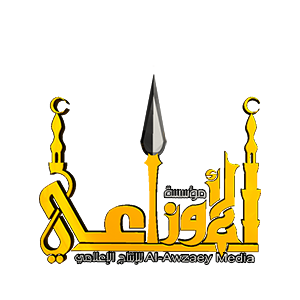
_________
To inquire about a translation for this video message for a fee email: [email protected]
New statement from the ‘Abd Allah ‘Azzām Brigades: "Raid of Bombing the Stronghold of Ḥizb Irān in the Hermel”

Click the following link for a safe PDF copy: ‘Abd Allah ‘Azzām Brigades — “Raid of Bombing the Stronghold of Ḥizb Irān in the Hermel”
___________
To inquire about a translation for this statement for a fee email: [email protected]
New statement from Jabhat al-Nuṣrah in Lebanon: "A Second Martyrdom Operation Upon the Stronghold of Ḥizb Irān in the Hermel”

Click the following link for a safe PDF copy: Jabhat al-Nuṣrah in Lebanon — “A Second Martyrdom Operation Upon the Stronghold of Ḥizb Irān in the Hermel”
__________
To inquire about a translation for this statement for a fee email: [email protected]
Hizballah Cavalcade: Faylak Wa'ad al-Sadiq: The Repackaging of an Iraqi “Special Group” for Syria
NOTE: For prior parts in the Hizballah Cavalcade series you can view an archive of it all here.
—
Faylak Wa’ad al-Sadiq: The Repackaging of an Iraqi “Special Group” for Syria
By Phillip Smyth
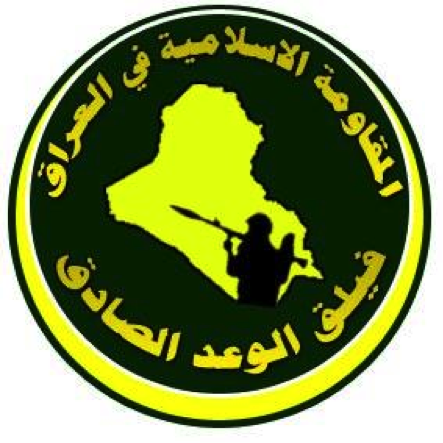
Figure 1: Faylak Wa’ad al-Sadiq’s logo. The top line reads: “The Islamic Resistance in Iraq” (“Al-Muqawama al-Islamiyya fi al-Iraq”). The bottom says, “The Truthful Promise Corps” (“Faylaq al-Wa’ad al-Sadiq”). The logo features the map of Iraq in the center with a blackened figure holding an RPG-7.
Officially known as Al-Muqawama al-Islamiyya fi al-Iraq-Faylaq al-Wa’ad al-Sadiq or The Islamic Resistance in Iraq-The Truthful Promise Corps (FWS), this organization has made some waves in Arabic-language media following the discovery of some of its images on social media networks.[1] Led by a Secretary General, FWS’s current leader is Iraqi Shia Sheikh Abu ‘Ammar al-Tamimi (A.K.A. Shiekh ‘Ammar). The organization also claims to be based in the holy city of Najaf, Iraq. It is clear from assessing the trajectory of public statements and their social media presence that the FWS appears to be increasing its public presence in an effort to establish the belief there are further organized Shia Islamist force deployments in Syria.
The group’s name references Lebanese Hizballah’s Secretary General’s long-standing goal to kidnap Israeli soldiers. This “promise” came to fruition in July 2006, when fighters from Lebanese Hizballah attacked an Israeli military convoy and kidnapped two Israeli soldiers and killed three. The attack spurred what would turn into the more than a month long 2006 Hizballah-Israel War.[2]
It is unclear whether it was created immediately following the 2006 Hizballah-Israel War or if it was established later in 2010-2011.
Reportedly, the FWS was first established to “fight the U.S. occupation of Iraq and the collaborators [associated with it]”.[3] In January 2012, FWS claimed it had no interest in running for elections or becoming part of the Iraqi government.[4] In August 2012, the FWS’s spokesperson Sheikh ‘Amr al-Lami, claimed the group changed paths and stated it would instead focus on civil projects. One year later, the organization claimed to have sent its first fighters (from a “military wing”) to Syria in order to, “defend shrines”.[5] “Shrine defense” has been the most prevalent narrative used by Iranian-backed Shia Islamist fighting groups which have deployed to Syria.
The group also made its first video and a group musical anthem public in January 2014. Though it appears to have been uploaded in February 2012. It is possible FWS uploaded the clip many months ago, then made it “private”, only to re-release it as part of a ramping-up of their public image. In the short clip, the FWS-subgroup which claims the attack is called Kata’ib Musa al-Khadhim-Sariyya ‘Ammar Ibn Yasir (The Musa al-Khadhim Brigade-‘Ammar Ibn Yasir Unit). Musa al-Khadhim references the seventh Imam in Twelver Shia Islam.[6] The targeted vehicle in the clip appears to be a U.S. armored HMMWV. [7] The naming of subdivisions after imams is a common form utilized by Iranian-backed Iraqi special groups.[8]
Little was known about the organization during the Iraq War (2003) and it had few announcements. The group also claimed to have its own webpage (since 2011). However, when the page is visited, it does not load.[9] Instead, with public appearances and statements by its leadership, it seems that since the summer of 2013, FWS has been dusted-off and repurposed for a new mission in Syria. September 2013 saw FWS start its initial postings on social media pages it had done little with since opening them in 2011.
This may indicate that the FWS was little more than a front-type group during the Iraq War (2003) which may now field rebranded fighters from other groups for the fight in Syria. In turn, this helps create perception of broader Iraqi Shia support for the concept of Wilayat al-Faqih and of this ideological grouping’s war in Syria. Comments on the page largely praised the leadership of Asa’ib Ahl al-Haq. This mirrors newly created front groups such as Harakat Hizballah al-Nujaba (or Harakat al-Nujaba), which fields fighters from Kata’ib Hizballah and Asa’ib Ahl al-Haq (AAH), has a leader from AAH’s ranks, yet is cast as independent organization. Photos of fighters from Harakat al-Nujaba front militias in Syria and those from Asa’ib Ahl al-Haq have found a presence on FWS’s Facebook page and adjoining profiles.
In addition to the organization’s name and links to other Iraqi Shia “special groups”, another element further cementing its relationship with Iran and its proxy militant groups, was the group claiming adherence to the concept of Wilayat al-Faqih. Wilayat al-Faqih, or the Absolute Guardianship by a Jurisprudent is Iran’s form of radical theocratic governing system. In August of 2013, the reported leader of FWS visited Beirut and confirmed his loyalty to the political-religious ideology.[10] The lead jurisprudent, or Wali al-Faqih, who is followed by FWS is Iranian Supreme Leader Ayatollah Khamenei. The organization’s imagery also details their loyalty to Khamenei.
Little is known about FWS’s combat abilities, force size, or deployments. In photos released by the group, it has been shown they have what can be considered a normal small-arms accompaniment, ranging from PKM-type machineguns to Kalashnikov pattern rifles. One important detail about deployments in Syria was that the FWS has only claimed (so far) to have specifically fought in one area, Aleppo. This further helps tie the group to Asa’ib Ahl al-Haq’s Harakat al-Nujaba and their Liwa’a ‘Ammar Ibn Yasir (LAIY). LAIY was the first Iraqi Shia Islamist group to announce they were fighting in Aleppo. The announcement also coincided with the December 2013-January 2014 increase in announced Shia Islamist military activities in Rif Aleppo and the city.

Figure 2: These photos, posted in mid-December, claimed to show an FWS fighter in Aleppo, Syria.
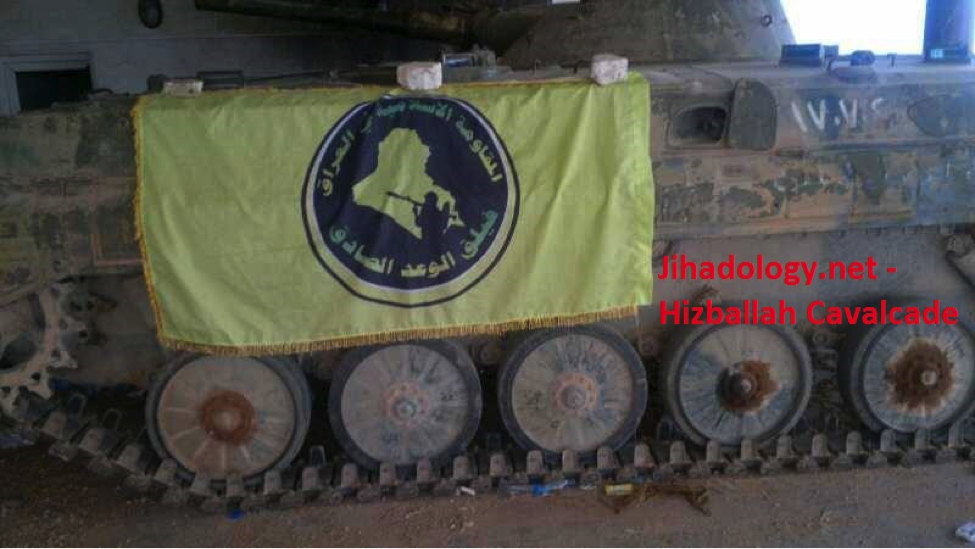
Figure 3: The FWS flag flies on a BMP-1 armored personnel carrier. It is unknown whether this flag was placed on an Iranian, Iraqi, or Syrian BMP-1 infantry fighting vehicle.

Figure 4: “ma’rkat al-haq dhud al-batl al-wa’ad sadiq qadm” or the “Battle of truth against falsehood, the truthful promise is coming”.
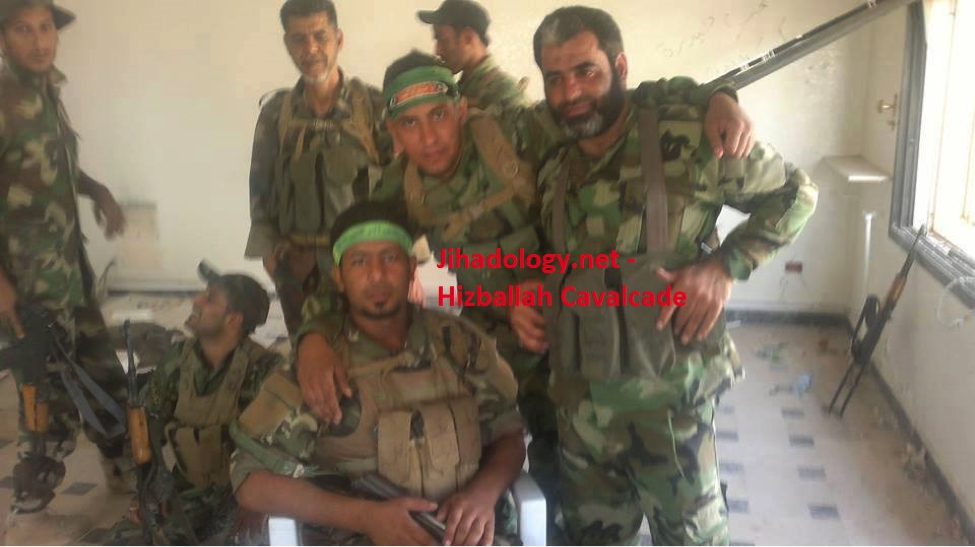
Figure 5: This photo claims these are Faylak Wa’ad al-Sadiq personnel. However, the photo has been posted by other Shi’a Islamist fighting groups.
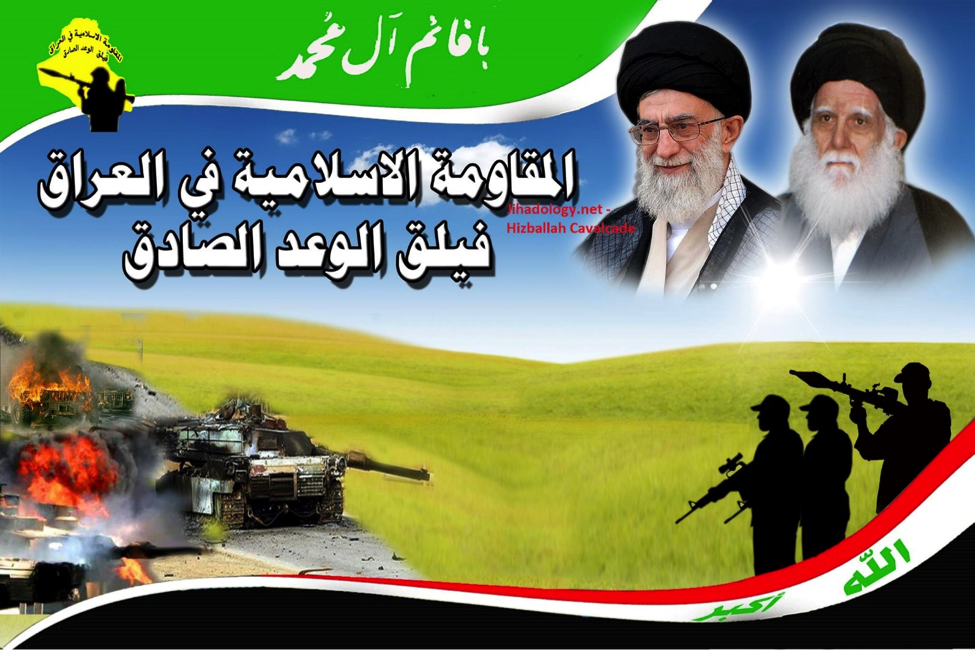
Figure 6: Iranian Supreme Leader Ayatollah Khamenei and Muhammed Muhammed Sadiq Sadr look from the sky down at burned-out U.S. armored vehicles. An Iraqi flag graphic is flows from the lower-right corner.

Figure 7: Another poster featuring Iranian Surpreme Leader Ayatollah Khamenei and Muhammed Muhammed Sadiq Sadr.
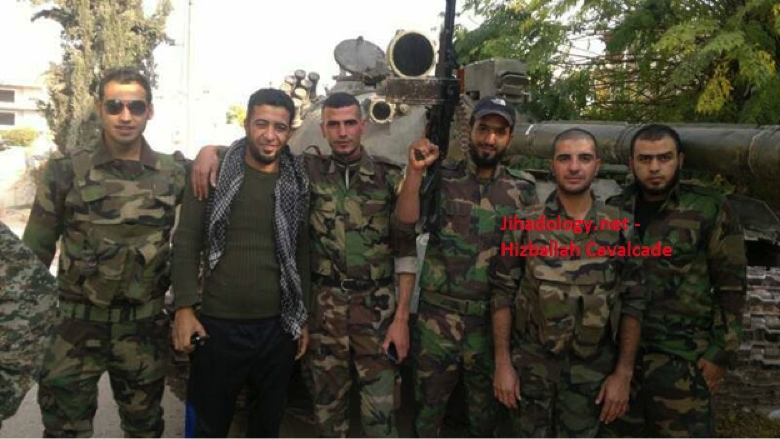
Figure 8: FWS fighters pose in front of a tank.
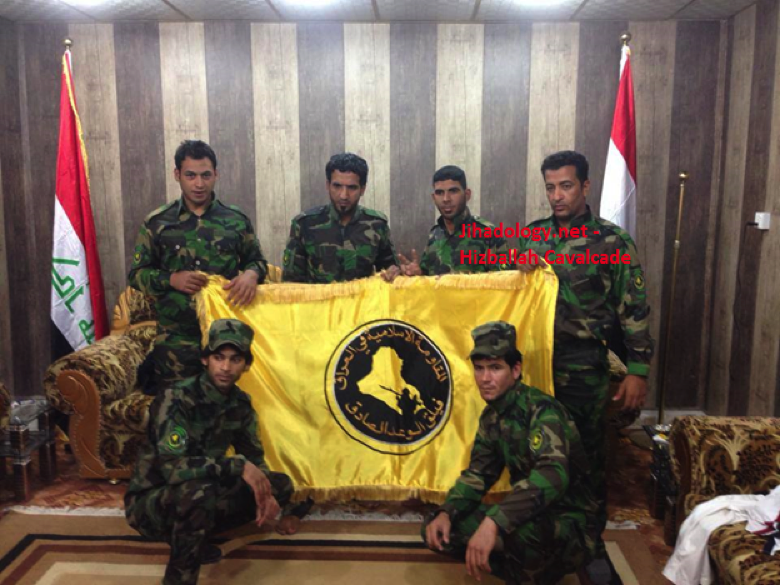
Figure 9: Uniformed FWS members pose with the group’s flag while flanked by Iraqi flags. Note the FWS patches worn by these 6 members.
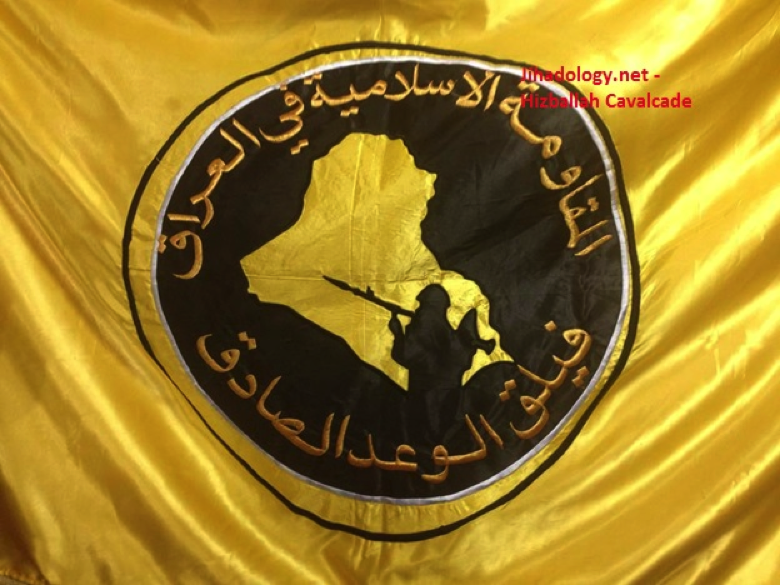
Figure 10: The FWS flag.
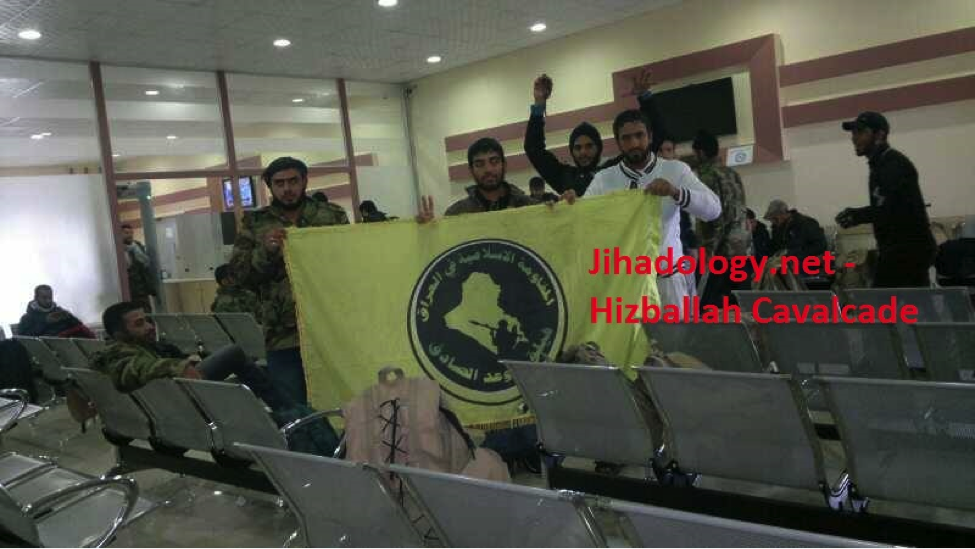
Figure 11: FWS fighters hold up the group’s flag.
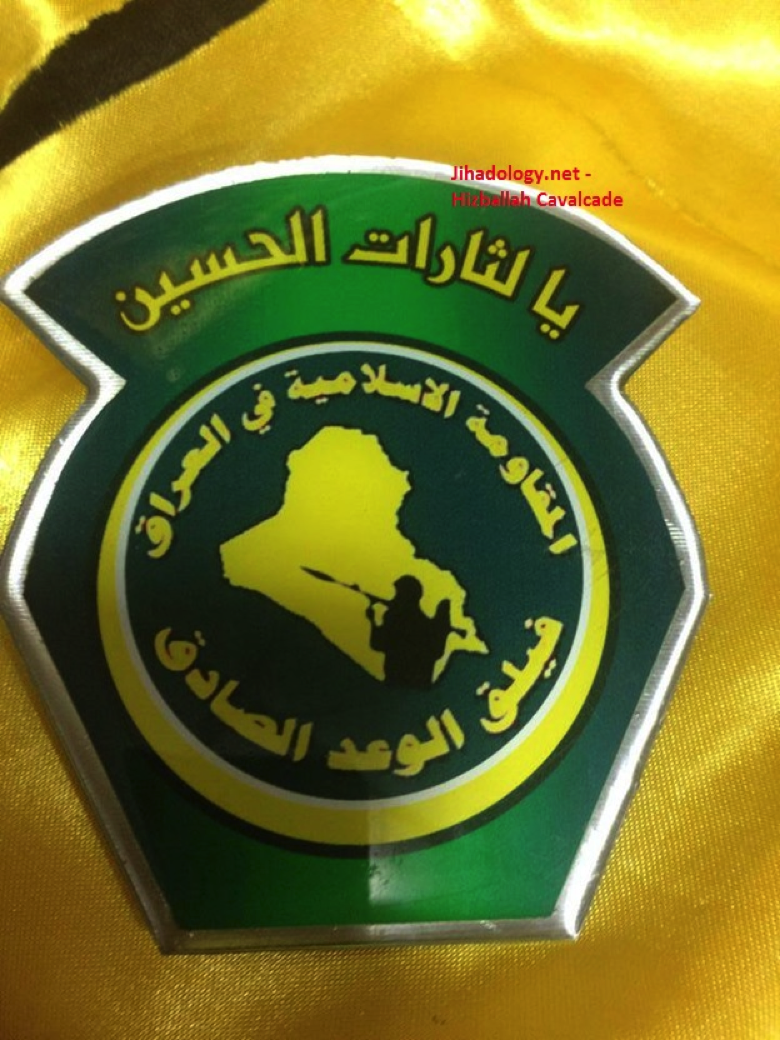
Figure 12: Another piece of FWS symbolism.
New video message from 'Abd Allah 'Azzām Brigades' Sirāj al-Dīn Zurayqāt: "About the Raid of the Iranian Embassy in Beirut"
UPDATE 1/4/14 9:21 PM: Here is an Arabic transcription of the below video message:
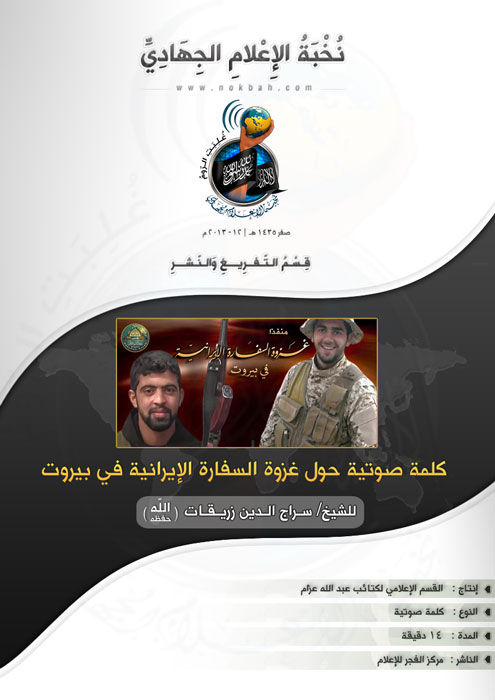
Click the following link for a safe PDF copy: Sirāj al-Dīn Zurayqāt — “About the Raid of the Iranian Embassy in Beirut” (Ar)
___________
—
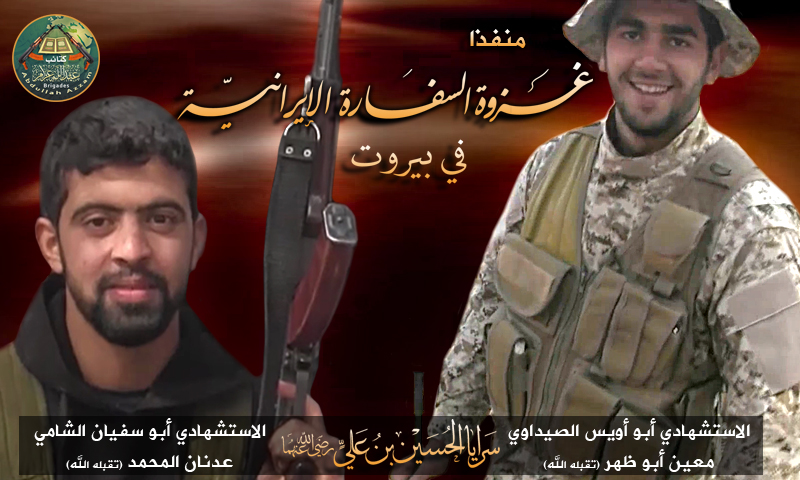
___________
To inquire about a translation for this video message for a fee email: [email protected]
Hizballah Cavalcade: Deck the Halls with a Minority Alliance: Shia Militia Social Media Messages to Christians
NOTE: For prior parts in the Hizballah Cavalcade series you can view an archive of it all here.
—
Deck the Halls with a Minority Alliance: Shia Militia Social Media Messages to Christians
By Phillip Smyth
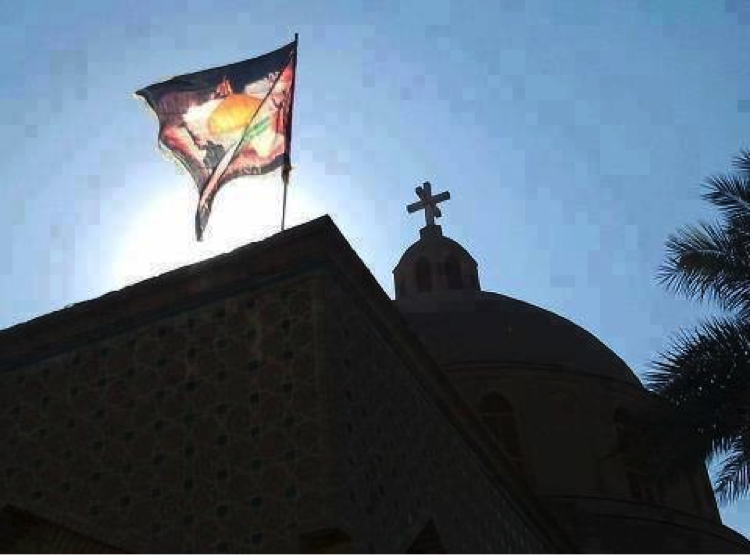
Figure 1: This photo, purporting to show a Shia banner on a church (possibly in Iraq) has been circulated around as a symbol of Shia-Christian unity and coexistence. The photo has been present on a multitude of Iranian-backed Shia Islamist group Facebook pages.
Minority alliances in the Middle East are hardly a new trend. During the Syrian Civil War there has been deliberate engagement by some minority elements to build more effective political alliances and fighting groups based on minority identification. This has particularly been the case with the mainly Alawite support base for Syrian leader Bashar al-Assad and his system’s relationship with Druze and Christian elements within Syria.[1] The trend of marketing the Syrian leader as both a secularist and as one who will take care of other minority groups has been a major theme in pro-Assad open source media circles.[2]
Nevertheless, Bashar al-Assad’s power bloc is not the only group touting their minority alliance credentials in the face of a mainly Sunni Islamist rebel enemy. In fact, Shia Islamist militias backed by Iran, which are also engaged in fighting these rebels, have also actively attempted to court Christians. These groups have tried to build a minority alliance sentiment with a number of strategically placed photos on their hive-like social media accounts. While this is but one of many different trends found on Shia Islamist militia social media pages, it does play to grander narratives.
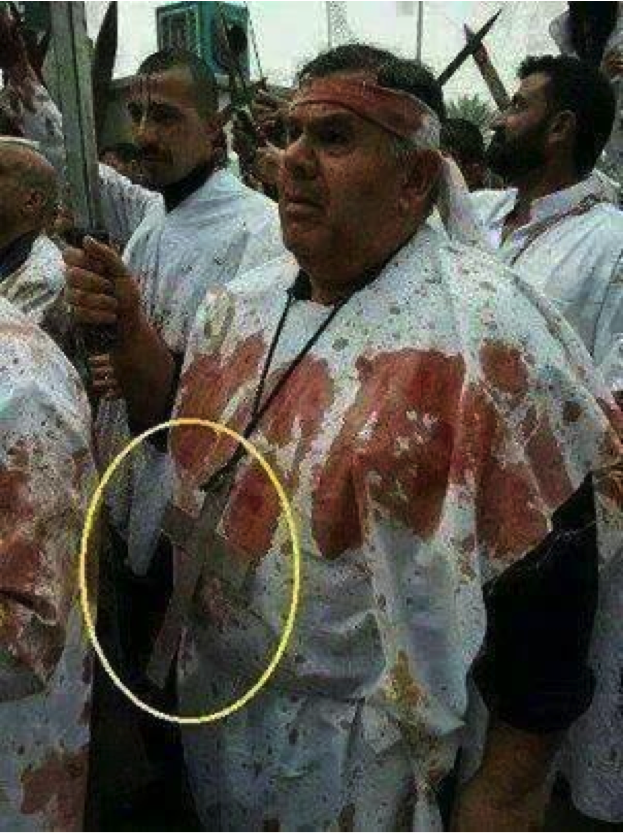
Figure 2: A photo showing a man covered in blood from what can be assumed was his own practice of zanjeer zani (Shia self-flagellation using a sword or knife). Note how a crucifix around his neck is circled. Some pro-Shia-militia-in-Syria social media pages have suggested the man is a Christian showing his devotion to historical Shia leader, Husayn. Other pages have used the photo as a symbol of Shia respect for Christians (and vice versa).
Lebanese Hizballah has actively engaged Lebanon’s Christian (primarily Maronite Catholic) community. In 2006 the group became a senior partner with Michel Aoun’s mainly-Christian Free Patriotic Movement in the March 8th Alliance.[3] Lebanese Hizballah has also attempted to court Lebanon’s Christian community in recent years. In 2012 around Christmas, pro-Hizballah writers published pieces touting the group’s outreach to Christians.[4] The group also issued a 2013 Christmas greetings to Christians and held meetings with the community.[5]
Since Shia militia groups in Syria have branded their enemies as al-Qa’ida style extremist “Takfiris”, it allows for continued marketing of Shia group activities as a hard power counter. Many Christians in Syria arrived in the country due to attacks they suffered in Iraq. Other Syrian Christians worry about their presence in the country with ascendant Sunni Islamist extremist groups in the country.
The goal of these photos appears to be less of an attempt to recruit Christian fighters for Shia militia ranks.[6] Instead, they are used to create the image of cross-sectarian unity. This form also pushes a narrative that Christians can not only find protection with Shia Islamist militias, but that these organizations will both respect them and act as viable long term allies. This messaging structure also plays off of earlier themes adopted by many regional Christian groups, namely the fear of being drowned in a “Sunni Sea”.
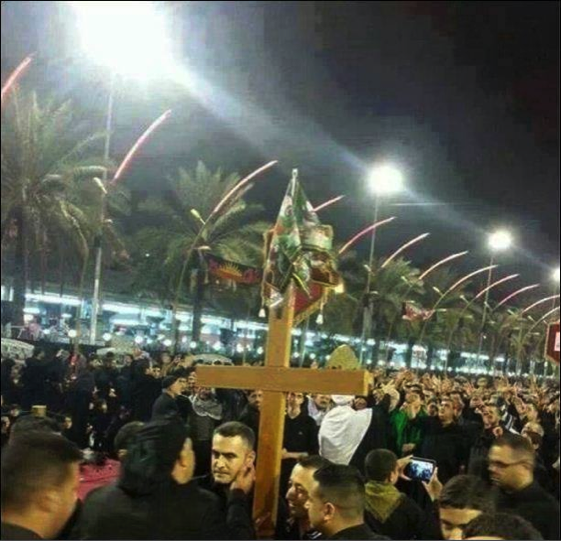

Figure 3: A photo supposedly showing Christians in Iraq engaging in a Shia pilgrimage. This photo also received many different captions. The main theme behind the captions promoted Christian-Shia brotherhood.

Figure 4: A photograph claiming to show an Iraqi church which had hung Shia banners to help usher in the New Year. This picture started to appear on Shia Islamist militia pages in December 2013. The photo was unclear, but implied it was taken in November during Ras as-Sanah al-Hijriyah (the Islamic New Year). Rebel activists seized upon the photograph, claiming it showed a church being desecrated with Shia flags in Syria.
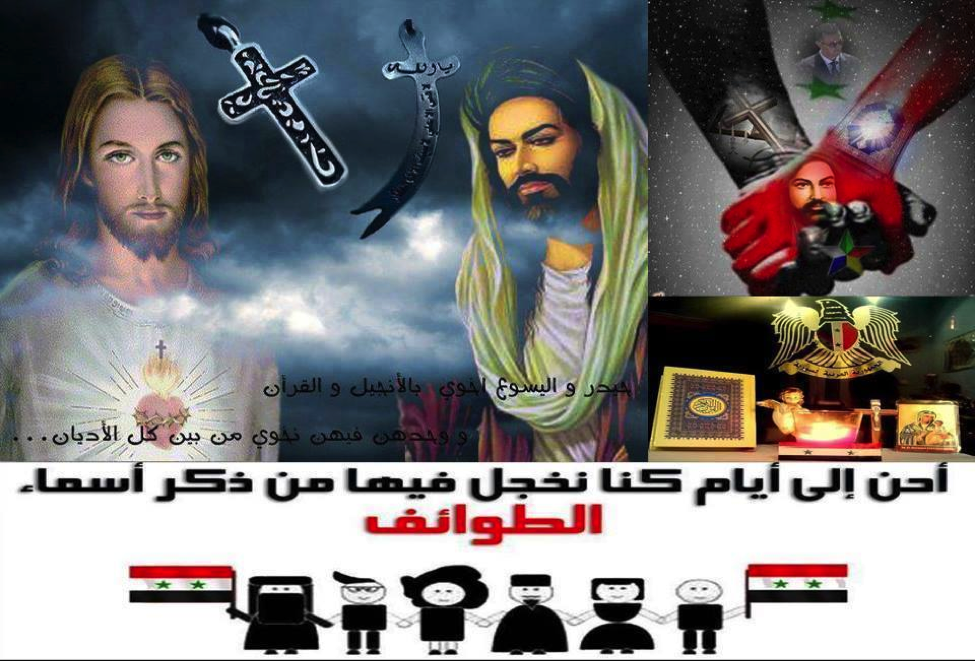
Figure 5: A picture promoting ‘Syrian unity’ between Shia and Christians. This picture has appeared on a small number of Iraqi Shia-manned militia group Facebook pages.
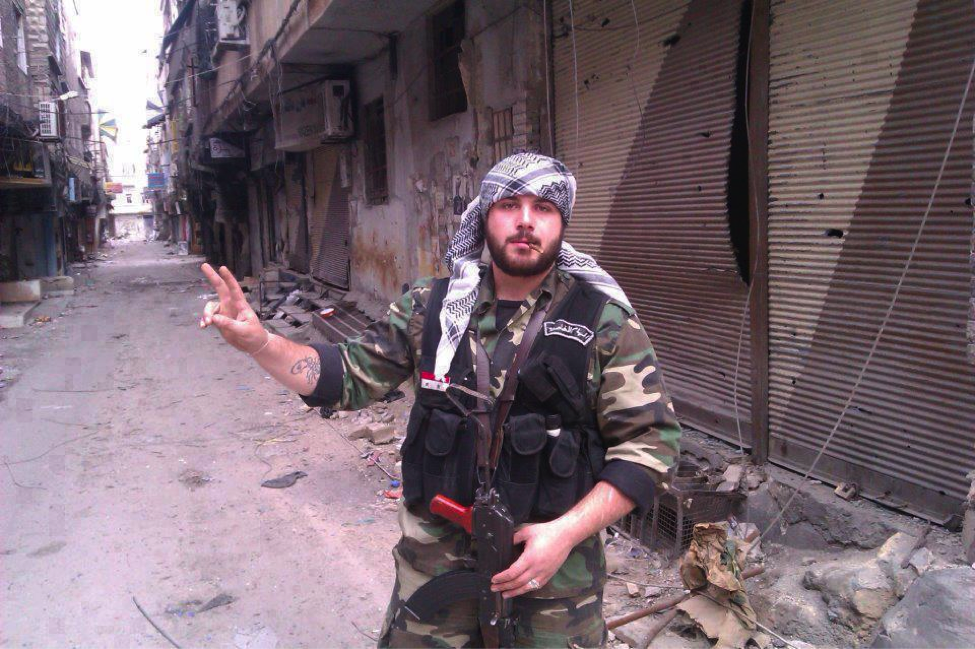
Figure 6: In April, Shia militia pages claimed this fighter was a “Christian martyred defending the Shrine of Sayyida Sukayna bint Husayn [the Sayyida Ruqayya Mosque]”. Some Shia militia pages referred to him as the “Son of the Virgin Mary”.
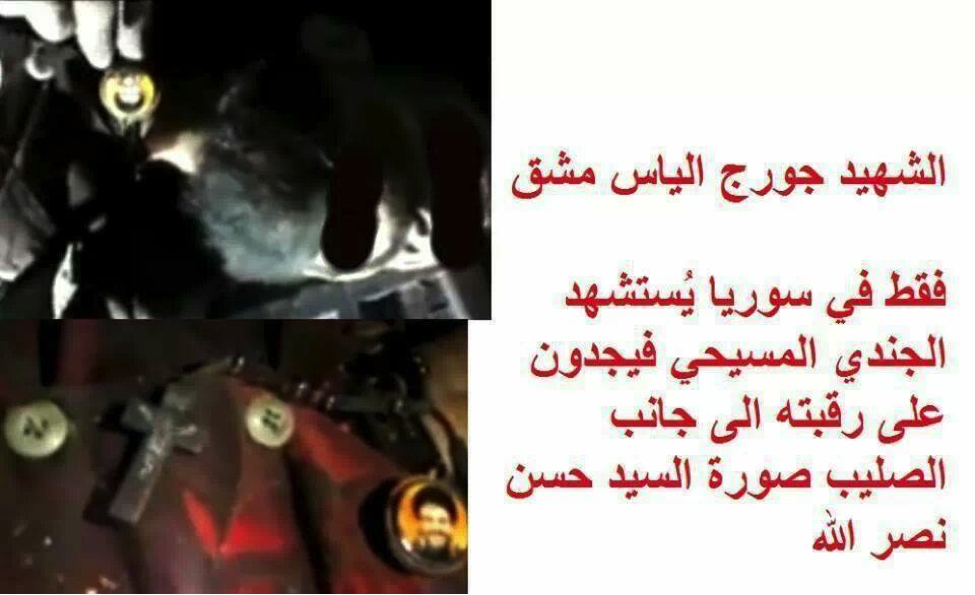
Figure 7: A photo showing a Syrian fighters accoutrements. Included are small medallion-like pictures of Lebanese Hizballah leader Sayyid Hassan Nasrallah and a crucifix. It noted in the caption that these items belonged to a Christian soldier named George Elias and that he wore them around his neck.
